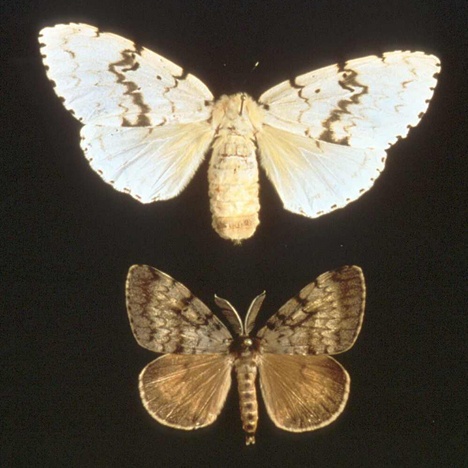The Washington State Department of Agriculture placed 5,400 gypsy moth traps throughout King County – the agency’s concentrated dragnet for a defoliator that is a serious threat to the state’s forest industry, production agriculture and cityscapes.
The WSDA’s annual gypsy moth trapping program will seek the invasive insect in every county of the state.
WSDA trappers placed nearly 24,000 small cardboard traps in residential neighborhoods and business districts, near ports and in rural areas. The traps will be checked every two to three weeks during the summer before being taken down in September.
The total of 5,400 traps in King County is the largest number placed in any of the state’s 39 counties.
Areas in King County that are being intensively trapped based on past gypsy moth activity are:
• In Kent near the intersection of Kent-Des Moines Road South and the West Valley Highway.
• In Federal Way near the intersection of Southwest 342nd Street and 30th Avenue Southeast.
• In Renton near the intersection of Southwest 27th Street and East Valley Highway.
• Port of Seattle because of the threat of Asian gypsy moths coming off foreign ships
In Seattle near the intersection of Roosevelt Way Northeast and Northeast 88th Street.
• Two locations in Bellevue, one near the intersection of Lakemont Boulevard Southeast and Village Park Drive, and the other near the intersection of Southeast 160th Avenue Southeast and Southeast 63rd Street.
• In Kirkland, east of Totem Lake near the intersection of Slater Avenue Northeast and Northeast 123rd Street.
• Southeast of North Bend near the intersection of 468th Avenue Southeast and Southeast 146th Street.
• East of Sahalee near the intersection of 259th Way Northeast and Northeast 39th Way.
Tracy Shirek, trapping coordinator for King County, is looking forward to the trapping season.
“If any moths are out there, we will find them,” she said. “Our summer moth catches will largely determine if eradication treatments occur in 2010.”
Washington’s 35-year old gypsy moth control program has been very successful. Washington has never had a permanent population of gypsy moths unlike 19 states in the East and Midwest where thousands of acres are permanently infested. The state’s last eradication treatment project took place in 2007 in Kent.
The gypsy moth is the worst forest pest ever brought into the U.S. In its caterpillar form, the pest attacks more than 500 species of trees and plants. The caterpillar quickly strips trees and plants of leaves, destroying some and weakening others so they are susceptible to plant diseases. The caterpillar destroys wildlife habitat, degrades water quality and triggers costly quarantines of timber, agriculture, and nursery products.
The number of gypsy moths caught annually in Washington varies widely. The largest number caught was 1,315 in 1983, and the smallest number was 17 in 2002. Last year 21 moths were caught.
For more information on Washington’s gypsy moth control program, call the gypsy moth hotline at 800-443-6684 or visit http://www.agr.wa.gov/PlantsInsects/InsectPests/GypsyMoth.


